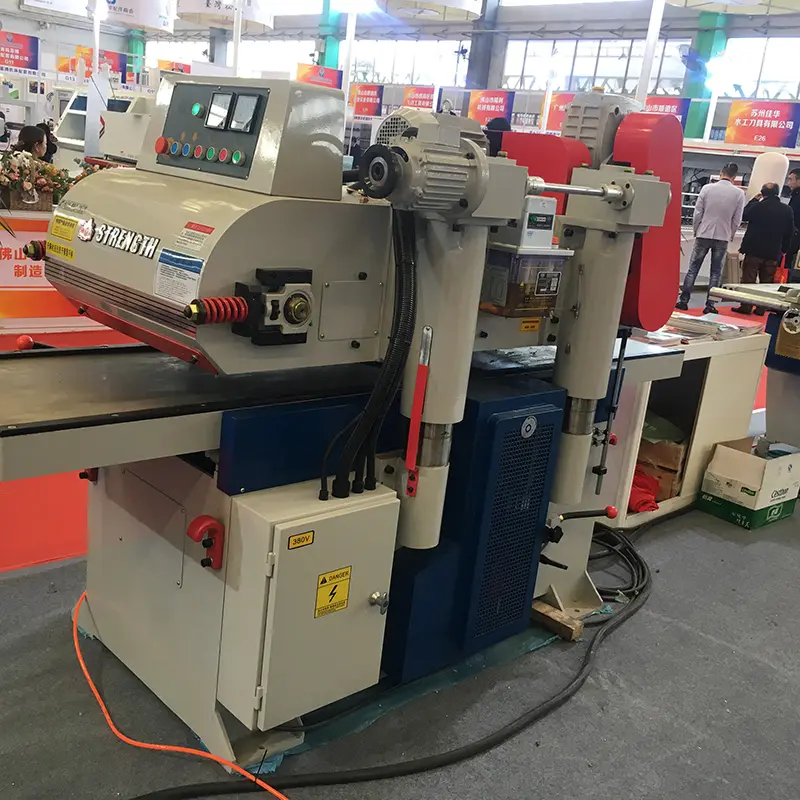Woodworking enthusiasts and professionals are always looking for the latest and most effective tools to enhance their craft. Speaking of splicers, screw-head splices have received a lot of attention in recent years. However, a common question that comes up is why screw-head couplings are more expensive than traditional straight-knife couplings. In this article, we’ll take a closer look at the features and benefits of screw-head fittings to understand why they cost more.
First, let’s explore what screw-head fittings are and how they differ from straight-knife fittings. The spiral head jointing machine, also known as the spiral cutterhead jointing machine, is characterized by a cylindrical drum with multiple small square knives or blades arranged in a spiral. These cutters are angled slightly to the axis of the drum to shear on contact with the wood. On the other hand, traditional straight-knife jointers have long, straight blades that cut wood in straight lines.
One of the main reasons screw-head fittings are more expensive is the precision and durability they offer. The slicing action produced by a spirally arranged knife produces a smoother finish on the wood surface than the cutting action of a straight knife. Not only does this reduce tearing and chattering, it also extends the life of the knife because each individual blade is designed to be easily replaced if it becomes dull or damaged. In contrast, the blades of straight-knife splicing machines require frequent sharpening and replacement, increasing long-term ownership costs.
Additionally, the design of the screw-head connector contributes to its superior performance and versatility. The cutter’s spiral pattern allows it to gradually engage the wood, minimizing impact on the motor for quieter operation. This reduced noise level is particularly beneficial for workshops where noise control is a priority. Additionally, the screw-head design allows the connector to handle tall shapes and difficult-to-work woods more easily, making it a valuable asset for woodworkers working with a variety of wood species.
Another factor that contributes to the higher cost of screw-head joints is the quality of the materials used in their construction. These machines are built to withstand heavy use and provide consistent results over time. Cutterheads are typically made from high-grade steel or carbide, ensuring excellent durability and wear resistance. Additionally, the precision engineering and assembly of screw head connectors allows for tight tolerances and minimal vibration, resulting in a stable and reliable woodworking experience.
In terms of maintenance, compared with straight knife splicing machines, spiral head splicing machines provide a more user-friendly experience. Individual blades can be rotated or replaced without complex adjustments, saving the operator time and effort. This ease of maintenance not only helps improve the overall efficiency of the machine, but also reduces downtime, allowing woodworkers to focus on their projects without interruption.
It’s worth noting that while the initial investment for screw-head couplings may be higher, the long-term benefits and cost savings justify the price difference. Superior finish, reduced maintenance requirements and enhanced performance make screw head jointers a worthy investment for serious woodworkers and joinery businesses.
In summary, the higher cost of screw head jointing machines can be attributed to their advanced design, precision engineering, and superior performance. The benefits of a smoother finish, reduced maintenance and versatility make it a valuable asset for woodworking professionals. As the demand for high-quality woodworking tools continues to grow, investing in a screw-head jointer is proving to be a wise choice for those who seek efficiency and superior craftsmanship.
Post time: Apr-03-2024

